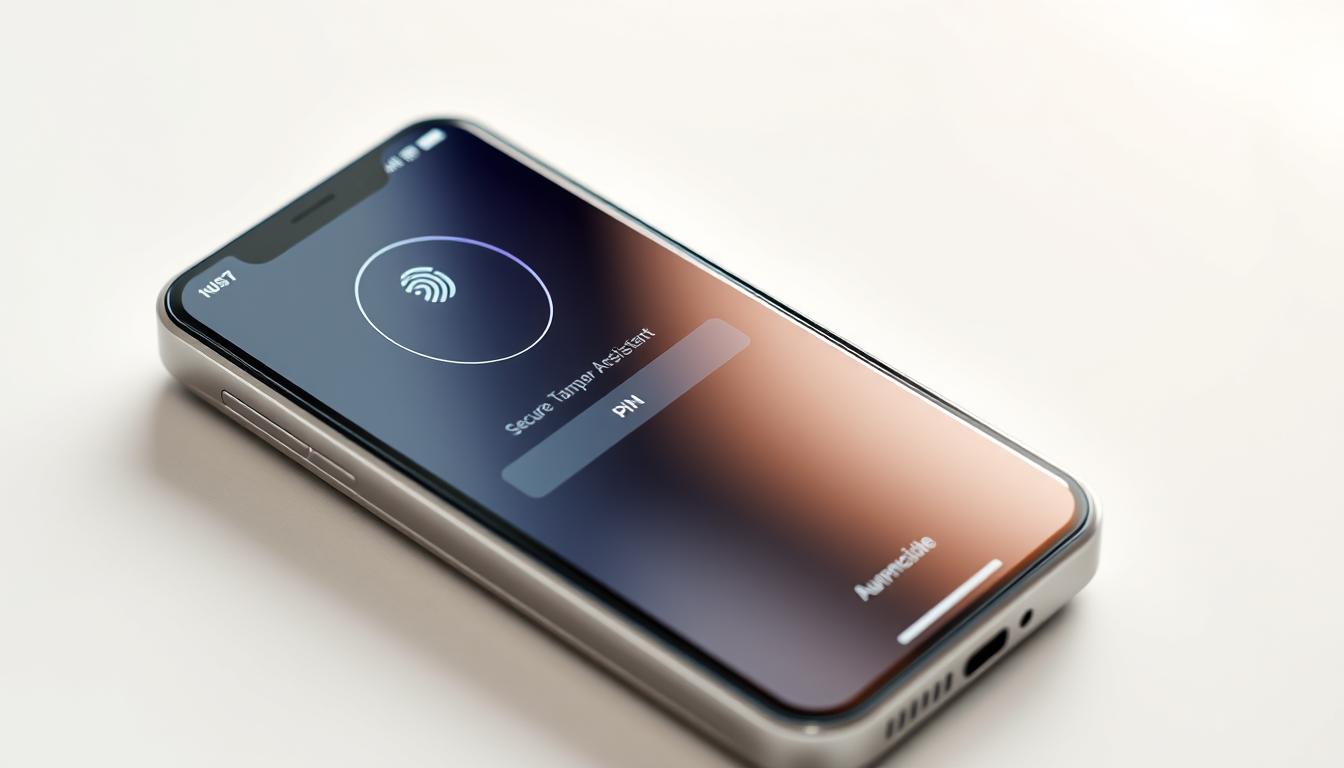Now Reading: A Beginner’s Guide to CBDCs and Blockchain Technology
- 01
A Beginner’s Guide to CBDCs and Blockchain Technology
A Beginner’s Guide to CBDCs and Blockchain Technology

Blockchain technology is changing how we view money and digital transactions. Central Bank Digital Currencies (CBDCs), built on this tech, are getting a lot of attention worldwide. This guide makes complex ideas simple, showing how CBDCs and blockchain affect our daily finances.
It explains why knowing about these innovations is important. From safe payments to the future of money systems, it covers it all.
Key Takeaways
- Blockchain technology forms the foundation for secure, decentralized systems.
- CBDCs represent a new form of digital money issued by central banks.
- These technologies are redefining traditional banking and payment methods.
- The guide breaks down technical terms for non-experts.
- CBDCs and blockchain could transform how money moves globally.
Understanding Blockchain Technology Fundamentals
Blockchain technology is the base for safe digital systems, like new currencies like CBDCs. It makes sure data is open and safe by using many computers. Let’s look at its main ideas step by step.
What Is a Blockchain?
Blockchain technology is a digital book. Think of it like a chain of boxes (blocks) that hold data. Each box has transactions, when they happened, and a special code called a hash. This book is copied on thousands of computers worldwide, making sure everyone agrees and keeping it safe.
The History of Blockchain Development
- 2008: The first blockchain came with Bitcoin, for safe money moves without banks.
- 2015: Ethereum came along, adding smart contracts for more uses than just money.
- Today: Many fields like health and supply chains use it for better trust and work.
How Blocks Are Connected in a Chain
Blocks are linked by special math. Here’s how it works:
- Transactions are put into a block.
- A unique hash is made for the block, like a digital ID.
- This hash is part of the next block’s data, making a strong chain.
This way, changing old data is almost impossible. It keeps the data safe—a big plus of blockchain technology.
What Are Central Bank Digital Currencies (CBDCs)?
Central bank digital currencies (CBDCs) are digital versions of a country’s money. They are made and controlled by national central banks. Unlike cash or credit card payments, CBDCs are only digital but have the same value and legal status as cash.
CBDCs are different from digital payments like Venmo or PayPal. They are directly backed by a government. For instance, while apps handle transactions, their value comes from bank accounts. CBDCs, on the other hand, are direct liabilities of the central bank, cutting out middlemen.
- Efficiency: CBDCs could make cross-border payments faster and reduce delays.
- Inclusion: They aim to bring financial services to those without bank accounts, making it easy for anyone with a smartphone to join in.
- Security: Digital ledgers can track transactions to fight fraud and money laundering.
- Sovereignty: CBDCs help central banks keep control over money policy, even with the rise of private digital assets like Bitcoin or stablecoins.
Some central banks look into using CBDCs and blockchain for clear, secure systems. This tech could verify transactions without needing banks. As governments, including the U.S. Federal Reserve, look into these options, CBDCs are set to change how money moves in our digital world.
The Relationship Between CBDCs and Blockchain
Central Bank Digital Currencies (CBDCs) and blockchain are key partners in today’s finance world. Blockchain’s tech makes CBDCs safer and clearer, allowing fast transactions and less fraud. CBDCs and blockchain tackle old payment system problems, but not all CBDCs use blockchain.

How Blockchain Powers Digital Currencies
Blockchain’s tech keeps CBDCs safe with unchangeable records and smart contracts. It offers both public and private blockchains, balancing openness and privacy. For example, IBM shows how blockchain’s network builds trust without middlemen, as detailed in this analysis.
Differences Between CBDCs and Traditional Cryptocurrencies
- Control: CBDCs are backed by governments, while cryptocurrency like Bitcoin is independent.
- Volatility: CBDCs keep a steady value; cryptocurrencies often see price changes.
- Anonymity: CBDCs focus on regulated identities; cryptocurrencies offer more privacy.
Design Options for CBDC Implementation
- Public Blockchain: Open networks for clearness but might lose privacy.
- Hybrid Models: Mix blockchain with old systems for more options.
- Centralized Ledgers: Focus on control over openness in some places.
Central banks pick designs based on their needs, balancing new tech with safety and privacy.
The Technical Architecture of Blockchain Networks
Blockchain networks have a layered structure for security and function. At the heart, a blockchain network uses a decentralized blockchain technology setup. Data is spread across many nodes.
Nodes are computers that check transactions and keep the ledger correct. Think of the blockchain network as a digital team. Each node has a copy of the ledger, updating it as it happens.
Transactions are grouped into blocks, linked by hashes. This makes a permanent record, without a central authority.
Key parts include:
- Nodes: Devices that store data and enforce rules.
- Consensus algorithms: Protocols like Proof of Work or Proof of Stake that validate transactions.
- Cryptography: Mathematical functions securing data integrity and user identities.
There are different designs. Public blockchain networks like Bitcoin’s are open to everyone. Private systems limit access. Central banks might choose hybrid models, mixing openness with control.
For example, China’s digital yuan uses a two-tier system. Commercial banks give out the central bank’s digital money. This combines blockchain technology with traditional finance.
Every choice affects how fast, private, and governed a blockchain is. Public networks focus on decentralization but might be slower. Private systems offer customization but are less open. Knowing these differences shows how design affects a blockchain’s use in the world.
How Distributed Ledger Technology Works
Distributed ledger technology (DLT) is key to modern blockchain networks. It’s different from old databases because it spreads data across many nodes. This makes a system where everyone has a copy of the shared record.
Consensus Mechanisms Explained
Consensus mechanisms help all nodes agree on transaction accuracy. There are two main ways:
- Proof of Work (PoW): Bitcoin uses this. Miners solve hard puzzles to check blocks. It uses a lot of energy but keeps the network safe.
- Proof of Stake (PoS): Ethereum uses this now. Validators are picked based on how much cryptocurrency they hold. It uses less energy but needs money to follow rules.
Public vs. Private Blockchains
Public blockchains like Bitcoin let anyone join. This makes it open but slower. Private blockchains limit who can join. They focus on speed and control for businesses or governments.
The Role of Nodes in Blockchain Networks
Nodes are crucial for blockchain networks. Full nodes keep the whole ledger. Mining nodes handle transactions in PoW systems. Lightweight nodes check data without keeping it all.
This setup helps blockchains grow and stay safe for different uses.
These parts help CBDCs use DLT wisely. They balance openness with rules in finance.
Security Features of Blockchain Technology
Blockchain security is key to digital systems like CBDCs. It makes data safe and transactions clear. Here’s how blockchain technology keeps financial systems safe:
- Cryptographic hashing: Each transaction gets a unique code (hash). This ensures data is correct. Changing one detail changes the whole hash chain, showing fraud.
- Public-private keys: Users use paired keys to access assets. Private keys prove identity without sharing personal info.
- Distributed ledgers: The blockchain has copies on thousands of computers. This makes it hard for hackers to change records without being caught.
- Immutability: Data can’t be edited once recorded. This keeps historical transactions safe from changes.

But, there are still risks. A blockchain security weakness like a “51% attack” could happen if most nodes are controlled by attackers. This is rare on big networks. Bugs in smart contracts or weak private key management also pose threats.
For CBDCs, central banks must weigh these risks against regulatory needs. They need to make systems both safe and easy to use. Unlike old databases, blockchain’s design limits single points of failure. This makes it a strong base for future currencies.
The Digital Asset Revolution: Beyond Cryptocurrencies
Blockchain technology goes beyond just cryptocurrencies. It opens up new ways for digital assets and blockchain applications. This change is reshaping how we store, trade, and manage value in a world without central control.
Tokenization of Real-World Assets
Now, things like real estate, art, and commodities are turning into digital assets. For example, a $1M apartment can be split into tokens for global investors to own parts of. Sites like Harbor and Polymath are already making securities digital, making it easier to own and trade.
Smart Contracts and Automated Processes
Smart contracts do things automatically when certain conditions are met. Think of a supply chain where payment happens only after goods are confirmed to have arrived. Ethereum’s smart contracts are already used for things like insurance claims and real estate deals. They show how blockchain can make transactions more efficient.
Decentralized Finance (DeFi) Applications
- Decentralized exchanges (DEXs) like Uniswap let users trade crypto without needing middlemen.
- Lending platforms like Aave offer interest to crypto holders, challenging traditional banks.
DeFi works outside of central control, but CBDCs might use its efficiency with some rules. This mix could change the financial world, combining new ideas with stability.
Benefits of CBDCs for Consumers and Businesses
Central bank digital currencies (CBDCs) bring big changes for everyone. For people, they could make handling money easier. Imagine sending money across the world as fast as sending a text, with costs down by up to 90%.
This means less waiting for money to move and more control over your finances. It’s a big win for anyone who uses money every day.
CBDCs could also help those without bank accounts. They could use mobile devices to store money safely. Plus, they might see less fraud thanks to new security features.
For companies, CBDCs could save money too. Retailers might not have to pay as much for credit card fees. This could make their profits go up.
- Instant settlements: Real-time transactions eliminate delays, improving cash flow for small businesses.
- Programmable money: Businesses could automate payroll or supplier payments using smart contract rules embedded in CBDC systems.
- Compliance efficiency: Built-in tracking features might simplify regulatory reporting for industries like remittances or cross-border trade.
But, how central banks set up these systems matters a lot. China’s pilot projects look promising. But, we need to make sure they protect our privacy too.
CBDCs aim to change how we handle money for the better. They could make sending money abroad cheaper and make business payments smoother. It’s all about making our financial lives easier in the digital world.
How Countries Around the World Are Exploring CBDCs
Central bank digital currencies (CBDCs) are now a reality. Countries worldwide are testing and designing systems to use CBDCs and blockchain in their economies. From Asia to Europe, they are trying different ways to mix innovation with financial safety.

China’s Digital Yuan: A Global Leader
China’s e-CNY is leading the way, with over 300 million users in pilot programs. It uses blockchain-inspired ledgers for tracking transactions but keeps user privacy safe. It’s focused on making transactions cashless and improving international trade.
U.S. Federal Reserve: Research and Caution
The Federal Reserve’s Project Hamilton with MIT is looking into technical possibilities. But it’s also waiting for clear rules. Unlike China, the U.S. is working with private developers to solve problems of scale and security.
European Central Bank: Balancing Tradition and Innovation
The ECB’s digital euro project is for everyday use, aiming to work alongside cash. It’s holding public talks on whether to use blockchain or other tech for its setup.
- Bahamas: The Sand Dollar, launched in 2020, is the first national CBDC, using blockchain for financial inclusion.
- Sweden: The e-krona is exploring a mix of blockchain and traditional banking.
- Emerging Economies: Countries like Nigeria and Cambodia are testing CBDCs to cut remittance costs and boost financial access.
These efforts show how central bank digital currencies are being shaped to meet local needs. Blockchain is often used as a base for making transactions clear and secure.
Potential Impacts of CBDCs on the Banking System
Central bank digital currencies (CBDCs) could change how we bank. They let people go straight to central banks. This might make banks lose a big source of money.
Banks might need to change how they lend and handle payments. This could be a big change for them.
Blockchain tech behind CBDCs could help central banks control money better. They could set interest rates or make money expire if not used. This could help them act quickly to economic changes.
- Two-tier models could balance new ideas with keeping things stable. Commercial banks could keep customer relationships while CBDCs handle transactions.
- CBDCs might cut down on costs for payments. But, this could hurt banks’ income.
- Money that can be programmed could make policy tools easier. But, there are still risks like system failures.
There are risks like bank runs if people move money to CBDCs during tough times. Central banks need to create safety nets. For example, they might limit how much CBDC people can hold.
The Federal Reserve is studying this carefully. They want to make sure changes don’t cause problems.
Commercial banks might focus more on personal services. Central banks will work on making blockchain tech work well. This could change how money moves and credit is made in the digital world.
Privacy Considerations in Blockchain and CBDC Implementation
Digital currencies today face a big challenge: keeping user privacy safe while keeping blockchain security. Blockchain’s open ledger is key for trust but also clashes with the need for privacy. Finding a balance is crucial for CBDCs to meet public expectations.
Balancing Transparency and Confidentiality
Systems like CBDCs and blockchain need ways to let regulators check transactions without showing personal info. Zero-knowledge proofs prove transactions are valid without sharing who sent or received them. Ring signatures hide who started a transaction, and confidential transactions keep amounts secret. These methods add privacy layers without hurting the network’s integrity.
Regulatory Approaches to Digital Currency Privacy
China’s Digital Yuan offers “controllable anonymity,” letting authorities track illegal activities but keeping daily life private. The EU’s Digital Euro project focuses on GDPR, giving users control over their data. In the U.S., the Federal Reserve is deciding how much privacy CBDCs should have, balancing anti-money-laundering laws with personal rights.
Technologies for Enhanced Privacy in Blockchain
- Zero-knowledge proofs: Verify transactions without exposing details.
- Ring signatures: Mask transaction participants using pooled data.
- Secure multi-party computation: Process data without revealing raw information.
These technologies help CBDCs achieve privacy goals while keeping blockchain security. Legal rules must match these technical measures to stop misuse.
Common Challenges in Blockchain Adoption
Blockchain technology has great potential but faces many challenges. These issues are in technical, regulatory, and operational areas. They are especially true for central bank digital currencies (CBDCs).

- Scalability: Most blockchain technology networks struggle with high transaction volumes compared to traditional systems.
- Energy Consumption: Proof-of-work systems, like Bitcoin’s, require vast energy, raising sustainability concerns.
- Interoperability: Diverse blockchain development projects often lack compatibility, hindering cross-platform use.
- Key Management: Users risk losing access to funds if private keys are compromised or forgotten.
Adoption barriers include:
- Regulatory Uncertainty: Conflicting global laws delay standardization.
- Resistance from Legacy Systems: Financial institutions may resist disrupting existing infrastructure.
- User Education: Complex interfaces and technical jargon deter widespread use.
CBDCs face unique challenges. Central banks must use blockchain development while keeping control over money. Keeping these systems secure is crucial to avoid economic problems.
Innovations are helping. New solutions like layer-2 and energy-saving models tackle scalability and sustainability. Working together, governments and tech companies aim to solve security and regulatory issues.
Use Cases and Real-World Applications of Blockchain Technology
Blockchain goes beyond just cryptocurrency. It offers new solutions in many fields. It makes systems secure and open, making things run smoother and building trust. Here are some ways blockchain tackles real-world problems.
Supply Chain Management and Tracking
Big names like Walmart and Maersk are using blockchain. They track products from start to finish. For instance, Walmart makes suppliers use IBM’s Food Trust to log food data. This cuts down recall times from days to seconds.
Maersk’s TradeLens platform also helps. It digitizes shipping documents, reducing delays by 40%.
Healthcare Data Management
Healthcare uses blockchain to keep patient data safe. Estonia’s e-Health Records system stores medical histories on a blockchain. This lets doctors access information securely.
Pharmaceuticals like Pfizer use blockchain too. They check if drugs are real, stopping fake ones from getting into the market.
Voting Systems and Government Services
In 2023, West Virginia tested blockchain for voting. It made sure votes were secure and couldn’t be changed. Dubai’s Land Department uses blockchain for property records. This cuts down on fraud in real estate.
Getting Started with Blockchain: Resources for Beginners
Start your blockchain journey with trusted resources designed to simplify learning. Explore blockchain development guides like Kaleido’s step-by-step tutorial. It shows how to create a blockchain network from scratch. Online platforms like Coursera and Udemy offer courses on smart contracts, cryptography, and decentralized systems.
- Read introductory books like Blockchain Basics or Mastering Ethereum for foundational knowledge.
- Join forums like Stack Exchange or Reddit’s r/Bitcoin to ask questions and share ideas.
- Experiment with sandbox environments—deploy test contracts on Ethereum’s Rinkeby or Polygon testnets.
Keep up with CBDC updates on central bank websites or platforms like the Bank for International Settlements. Follow experts like Don Tapscott or CoinDesk for insights. For privacy-focused topics, explore privacy-enhancing blockchain applications.
Gain hands-on experience by setting up a local blockchain node using tools like Ganache. Career paths include blockchain developer, smart contract auditor, or policy analyst. Start small—install MetaMask, send test tokens, and join hackathons to build skills.
Navigating the Future of Digital Currency in a Blockchain-Powered World
Blockchain and CBDCs are changing finance. They bring smart management of digital assets. With AI and IoT, they could change supply chains and payments.
Smart contracts might make agreements automatic. This could cut down on the need for middlemen.
CBDCs are different from decentralized cryptocurrencies. Central banks want control but use blockchain’s efficiency. This could change who has power in finance.
Nations like China are leading in CBDC use. Privacy and security are big concerns. But, research is looking for ways to keep things safe and private.
Keeping up with these changes is important. People can look into blockchain jobs. Citizens should talk about digital currency policies. For more info, check out expert analysis on digital currency trends. Learning more will help us understand a world where blockchain and CBDCs change how money works.
FAQ
What are Central Bank Digital Currencies (CBDCs)?
CBDCs are digital money issued by a country’s central bank. They are not like cash but exist online. They aim to bring digital payment benefits while being backed by the government.
How does blockchain technology relate to CBDCs?
Blockchain is key for many digital currencies, including CBDCs. It makes transactions secure, traceable, and fast. This is thanks to blockchain’s ability to prevent fraud and tampering.
What makes blockchain technology suitable for digital assets?
Blockchain is great for digital assets because it’s decentralized. This boosts security and ensures everything is transparent. It’s perfect for finance, where trust and security are crucial.
Are CBDCs considered cryptocurrencies?
No, CBDCs are different from cryptocurrencies like Bitcoin. CBDCs are controlled by governments, while cryptocurrencies are not. This affects how they are governed and used.
What are the potential benefits of CBDCs for consumers?
CBDCs could save money on fees, speed up payments, and help more people access banking. They also promise better security and easier international transactions.
What challenges do CBDCs face in terms of implementation?
CBDCs have to overcome security, system integration, and regulatory hurdles. They also need to win over users and balance control with innovation. Success requires strong blockchain and policy efforts.
How can blockchain be used beyond financial applications?
Blockchain is useful in many areas, like supply chains, healthcare, and voting. It ensures goods are tracked, patient data is safe, and votes are secure.
What are the privacy concerns associated with CBDCs?
Privacy is a big issue with CBDCs because transactions are public. But, solutions like zero-knowledge proofs and data protection laws are being explored to keep user info safe.
How might CBDCs impact traditional banks?
CBDCs could change banking by letting people hold accounts with central banks. This might reduce banks’ role in payments. Banks might need to rethink their place in the financial world.















